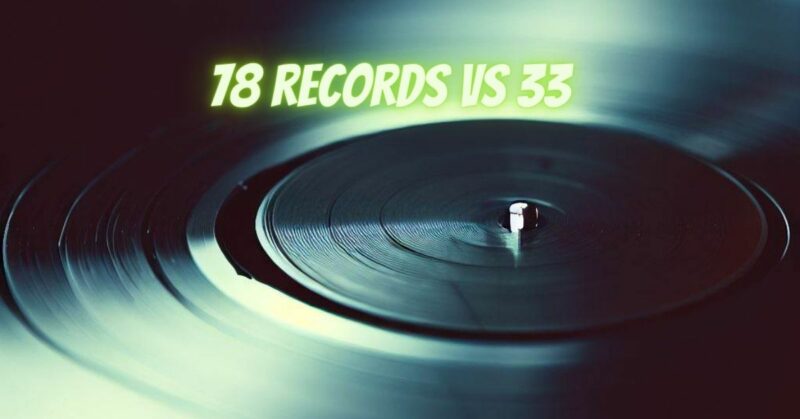In the fascinating world of vinyl records, two iconic playback speeds have stood the test of time: 78 RPM and 33 RPM. Each speed represents a distinct era in music history, offering unique sound characteristics and historical significance. In this article, we delve into the comparison of 78 RPM and 33 RPM records, exploring their differences, strengths, and the historical context that shaped their prominence.
1. RPM Speeds: Before delving into the comparison, it’s essential to understand the RPM speeds and their respective characteristics:
- 78 RPM: The 78 RPM (Revolutions Per Minute) speed was a standard for early shellac records, popular during the first half of the 20th century. These records are often made of shellac or hard rubber and were widely used for both singles and albums. Due to their fast rotation, 78 RPM records provided relatively short playing times per side, accommodating one to three minutes of music.
- 33 RPM: The 33 RPM speed gained prominence in the late 1940s with the introduction of vinyl records. These records, also known as LPs (Long Play), are made of vinyl and revolutionized the music industry by offering longer playing times. They allowed for up to 20 minutes of music per side, making them suitable for complete albums.
2. Sound Quality: One of the significant differences between 78 RPM and 33 RPM records is their sound quality:
- 78 RPM: While 78 RPM records are nostalgic and historically significant, their sound quality may not match that of modern vinyl records. The fast rotation speed limited the amount of music information that could be engraved on each groove, resulting in reduced audio fidelity, particularly in the high-frequency range. Despite this limitation, 78 RPM records carry the essence of early jazz, blues, and other classic genres.
- 33 RPM: Vinyl records at 33 RPM offer superior sound quality compared to 78 RPM records. With the slower rotation speed and the use of vinyl material, LPs allowed for more detailed and dynamic sound reproduction. This improvement in sound quality contributed to the rise of vinyl’s popularity and continued allure among audiophiles.
3. Historical Context: The shift from 78 RPM to 33 RPM records was influenced by technological advancements and evolving consumer preferences. The introduction of vinyl and the ability to produce longer-playing records revolutionized the way people consumed music. LPs allowed artists to present complete albums as cohesive artistic works, rather than a collection of singles.
4. Availability and Collectibility: 78 RPM records are considered collectible items, with vintage editions often sought after by collectors. While they may not be as common as 33 RPM records, their historical significance and unique sound appeal to those interested in preserving musical heritage.
| Feature | 78 RPM Records | 33 RPM Records |
|---|---|---|
| Speed | 78 RPM | 33 RPM |
| Length | Shorter | Longer |
| Sound quality | Lower | Higher |
| Type of music | Popular music | Classical music, jazz, rock |
The comparison of 78 RPM and 33 RPM records reveals a fascinating journey through the evolution of music playback. While 78 RPM records evoke nostalgia and historical charm, 33 RPM records showcase the progress of sound technology and improved audio fidelity. Each speed holds a place in the hearts of music enthusiasts, with their own merits and historical significance.
In the modern era, 33 RPM records remain a beloved format among audiophiles and vinyl enthusiasts for their superior sound quality and the artistic experience of listening to full albums. However, the allure of 78 RPM records as collectibles and gateways to the past continues to captivate collectors and those who appreciate the treasures of music history. Whether you find yourself drawn to the vintage allure of 78 RPM or the modern fidelity of 33 RPM, both formats offer an enchanting journey through the timeless magic of vinyl records. Happy spinning!

